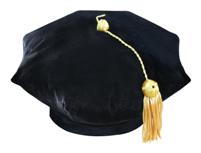POTO Reflection No. 3
Taking into context Freire’s thoughts on the importance of dialogue, our recent community service exercise at Yorkwood Elementary School would be an example of how exchanges should occur between students and teachers. However, it is likely our approach was due more to wanting to understand better “the why” and how the students might have felt as a result. Since at least 2010, I have been aware of the use of Positive Behavioral Interventions & Support (PBIS) systems in Baltimore City Public Schools. Interestingly, it appears as if PBIS began as a way to provide behavioral support within a holistic context; and this was mostly within a special education setting (Safe & Civil Schools, n.d.).
The founding premise of PBIS is interesting, as a part of my educational philosophy is if each student were provided with an Individualized Education Plan, each would be specifically destined for success. How is it that once upon a time students of varying educational levels were all taught in the same room, i.e., the one-room schoolhouse? Why is it impossible to return to such a model? If each child possesses an IEP, would it be necessary to segregate those who do not meet a points-threshold, from those who did? Especially when most might be in that position through no fault of their own. Why are children used as pawns to teach the parents a lesson?
The other thought, i.e., reflection, that crossed my mind regarding our experience, was wondering how such a situation would be handled within a homeschooling cohort. Would students be segregated or would each student, as a result of the nature of homeschooling, already have an individualized education plan focused on their success? What would it take to get public schools to this point? Pursuing this educational methodology might be at odds with present-day neo-liberals. Sadly, I must admit, my current views on how to fix a part of the issue lies within this realm as well. However, it would be interesting to conduct research to determine what from a homeschooling model could be incorporated within the daily routines of public schools.
Speaking with the students in the natural groupings, in which they were paired, seemed to help with the table conversations. It allowed for what seemed to be transparent feedback from the students to us, as visitors. It appeared as if each of us inquired as to the students’ thoughts of not participating in some of the activities. Within my group, in particular, most of the students appeared to exhibit “model behavior” for an elementary school student. Each was eager to talk and discuss what they had learned through the year. Two young ladies even wanted to show off their math skills.
It is perplexing how students exhibiting such an educational caliber were not considered or reviewed for possible inclusion in the larger activities. It might have been helpful to see the rubric used, versus hearing it second-hand from staff members. The experience was a good one and might definitely be more educational during a full semester course and culminating with participation in the closing PBIS activity.
Safe & Civil Schools (n.d.). Retrieved June 24, 2019 from http://SafeAndCivilSchools.com/research/papers/pbs.php


